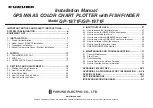
2
A1 A2
5 6
1 2
3 4
14 11 13 12
8k2
8k2
24 21 23 22
8k2
8k2
T2 T1
2
1
2
1
2
1
2
1
2
1
2
1
2
1
1 2
l
u
r
d
2
1
2
1
IN1
IN2
i
i
5.2 Bircher signal indicator (BSI)
Details see supplementary sheet
5.3 Configure inputs for stationary sensors
Configure mode
5.1.a Pairing,
using the first inputs of
different transmitters
5.1.b Pairing,
using
both inputs
of transmitter
5
Configuration
3
Installation
4
Wiring
VIN
Test
Output 2
(Uth > 10 V AC/DC /
< 11 mA )
Only to be wired
in case of a
Cat. 2 application
Battery low
Output 3
Power supply
(12–36 V AC/DC)
(36 V AC/DC / 1 A)
Do not wire
12/13 and 14/11
simultaneously
(36 V AC/DC / 1 A)
Do not wire
23/22 and 24/21
simultaneously
(36 V AC/DC / 0.1 A)
Output 1
Press button
Press button
Press button
Transmitter Tx1
Transmitter Tx2
Transmitter(s)
Receiver
Receiver
Receiver
Receiver
Receiver
Receiver
Receiver
Receiver
Receiver
Transmitter Tx1
Transmitter Tx2
Transmitter(s)
Release button
Release button
Release button
Pair
to output 1
Pair
to output 2
Pair
to
both
outputs
Long press
joystick
Move joystick
left
Move joystick
right
Move joystick
upwards
Move joystick
acc. to requested
configuration
(see 7.2)
LED
LED
LED
LED
LED
LED
LED
LED
Flashes
orange
Orange
Orange
Orange
Flashes
orange
Flashes
orange
Flashes
orange
Green
Release
joystick
Press joystick
again
Press joystick
again
Beep
Beep
Beep
Beep
Beep
Beep
Beep
Beep
Beep
According to the application, e.g. figure 1.a or 1.b
See figure
1.a
See figure
1.b
Note:
When using the NC outputs (13/12, 23/22), in Cat. 3 set-up, the wiring with the control must be permanently installed and protected against
external damage according to EN ISO 13849-2 Tab.D.4 or else Cat. 2 applies and a test signal is needed
(see also manual of transmitter)
Inputs for stationary sensing edges
LED flashing green level of Bircher signal indicator






















